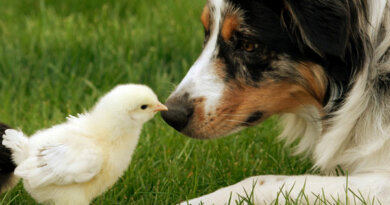‘Upcycled’ Could Be More Waste Disposal In Pet Food – Truth about Pet Food
A new post from PetFoodIndustry.com tells us the pet food industry has been working to further mislead consumers; “What’s in a name: Can ‘upcycling’ attract pet food buyers?”
Quoting: “About 40% of all human food produced globally is lost or goes to waste. Pet food is not part of the problem, however; in fact, it offers solutions.”
“From straightforward use of upcycled foods in pet treats and pet foods, which has been happening for several years, to newer processes and products like California Safe Soil’s (CSS) collection and conversion of supermarket fruits, vegetables and meats into pet food ingredients, pet food is becoming a key weapon in the fight against food waste.”
“Pet food’s longtime use of food products not destined for human consumption—including spent grains from the brewing or distilling process (such as dried distiller grains, or DDGS) or meat products often rendered into meals and similar ingredients—could be considered one of the original examples of upcycling. And yet, we don’t call it that. Should we?”
“Should the players in this category collaborate to make a push for ‘upcycled’—not just for ingredients like CSS’s but also traditional ones like rendered meat meals?”
“…if terms like ‘upcycled poultry products’ or ‘upcycled meat products’ would better resonate with consumers.”
Better resonate with consumers or mislead them?
The potential problems with upcycled ingredients in pet food…
- Human food safety standards
- Highly processed
- Disclosure not required
- Unknown ingredients due to availability, and risks
One. It’s one thing if barely expired meat from a grocery store, is promptly transferred under refrigeration to pet food manufacturers and then processed into pet food. But it is a completely different issue if the expired meat is VERY expired and is not handled per human food safety standards (as example not transported under refrigeration) and then highly processed before being further processed into pet food.
To our knowledge, there are no regulations that would require upcycled foods to maintain human food safety standards destined for pet food. As with any other pet food ingredient, manufacturers are not held to food safety standards of human food – they are not required to transport or warehouse ingredients in refrigerated conditions.
California Safe Soil (CSS) is a company that upcycles “supermarket food to produce pet food ingredients”. CSS does state they transport ingredients from groceries under refrigeration, but the ingredients are then highly processed.
Two. CSS has patented technology – “Harvest to Harvest” – that hydrolyzes upcycled fruits, vegetables, and meats for pet foods. This company has been “working with the Association of American Feed Control Officials on claims, trying to gain approval for ‘hydrolyzed fruits and vegetables’ and ‘hydrolyzed meats.’” But, as quotes above show, the industry really wants to further confuse consumers by removing ‘hydrolyzed’ from an AAFCO ingredient definition; “…if terms like ‘upcycled poultry products’ or ‘upcycled meat products’ would better resonate with consumers.”
Three. To our knowledge there are no regulations that would require label disclosure of upcycled food ingredients in a pet food. In a February 2023 post from PetFoodProcessing.net, four pet treat companies have been certified by the Upcycled Food Association; Chippin, Leashless Lab, Phelps Pet Products, and Shameless Pets. Leashless Lab, the Phelps Pet Products treat Table Scraps, and Shameless Pets all disclose their use of upcycled ingredients on their labels.
But Chippin treats does not. The PetFoodProcessing.net post stated “The company’s Cricket Jerky and Silver Carp Jerky treats are Upcycled Certified and include upcycled, US-grown sweet potatoes”, yet we did not find disclosure of upcycled ingredients being used on these pet treat labels or website.
Four. With an AAFCO approval of ingredient definitions of hydrolyzed fruits and vegetables or upcycled meat products, consumers won’t be told just exactly is in these ingredients. Batches of hydrolyzed ingredients will vary depending on foods available. And what if dangerous for pets to consume ingredients – such as onions or grapes – were added to the mix? Will future regulations require proper documentation of destined for pet food upcycled foods to prevent risk foods from being included and will full disclosure to the exact ingredient included be provided to consumers? Doubtful.
Personal Opinion: on the surface, upcycled foods in pet food sounds good. But looking closely, the risks far outweigh the benefits. To me, while there may be a few exceptions, this is just another way to dispose of waste in pet food with no transparency for pet food consumers. And we have little hope that regulatory authorities will ever require the disclosure and safety protections that upcycled foods need to be used in pet food.
Wishing you and your pet(s) the best,
Susan Thixton
Pet Food Safety Advocate
Author Buyer Beware, Co-Author Dinner PAWsible
TruthaboutPetFood.com
Association for Truth in Pet Food

Become a member of our pet food consumer Association. Association for Truth in Pet Food is a a stakeholder organization representing the voice of pet food consumers at AAFCO and with FDA. Your membership helps representatives attend meetings and voice consumer concerns with regulatory authorities. Click Here to learn more.
What’s in Your Pet’s Food?
Is your dog or cat eating risk ingredients? Chinese imports? Petsumer Report tells the ‘rest of the story’ on over 5,000 cat foods, dog foods, and pet treats. 30 Day Satisfaction Guarantee. Click Here to preview Petsumer Report. www.PetsumerReport.com
Find Healthy Pet Foods in Your Area Click Here

The 2023 List
Susan’s List of trusted pet foods. Click Here to learn more.



